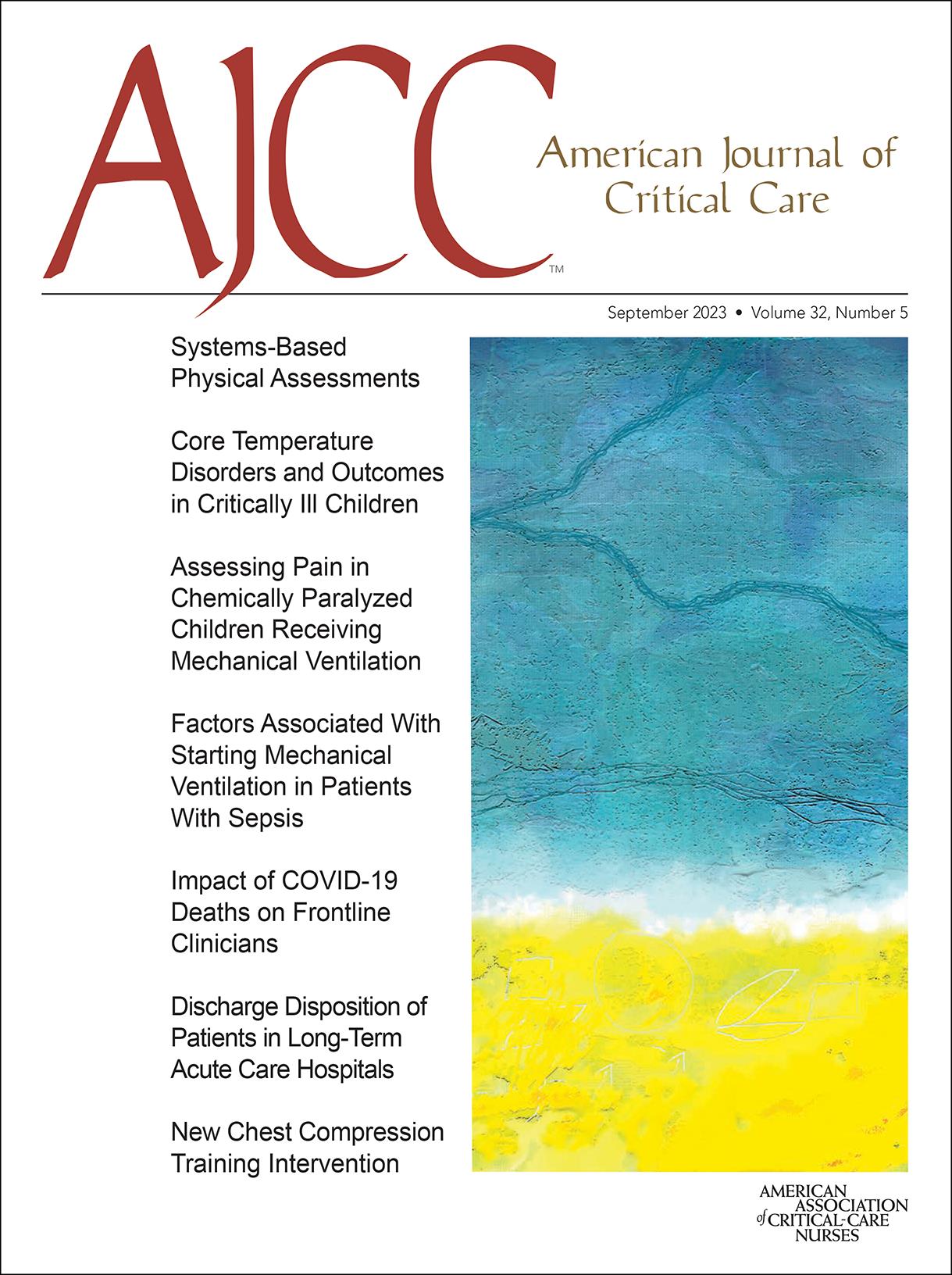What You Get
American Journal of Critical Care (AJCC)

September 2023
Pages: 346-354
Contact Hours 1.00
CERP A 1.00
Expires Sep 01, 2026
Topics: PainManagement, Pediatric
Journal Article
CE Article
Elyse L. Laures, PhD, RN;
Cynthia M. LaFond, PhD, RN, CCRN-K;
Barbara St. Marie, PhD, AGPCNP;
Ann Marie McCarthy, PhD, RN
What You Get
American Journal of Critical Care (AJCC)

September 2023
Pages: 346-354
Contact Hours 1.00
CERP A 1.00
Expires Sep 01, 2026
Topics: PainManagement, Pediatric
Pain assessment in the pediatric intensive care unit (PICU) is complex, specifically for children receiving mechanical ventilation who require neuromuscular blockade (NMB). No valid pain assessment method exists for this population. Guidelines are limited to using physiologic variables; it remains unknown how nurses are assessing and managing pain for this population in practice.
To describe how PICU nurses are assessing and managing pain for children who require NMB.
A cross-sectional quantitative design was used with an electronic survey. Nurses were asked to respond to 4 written vignettes depicting a child who required NMB and had a painful procedure, physiologic cues, both, or neither.
A total of 107 PICU nurses answered the survey. Nurses primarily used behavioral assessment scales (61.0%) to assess the child’s pain. All nurses reported that physiologic variables are either moderately or extremely important, and 27.3% of nurses used the phrase “assume pain present” formally at their organization. When physiologic cues were present, the odds of a nurse intervening with a pain intervention were 23.3 times (95% CI, 11.39-53.92; P < .001) higher than when such cues were absent.
These results demonstrate variation in how nurses assess pain for a child who requires NMB. The focus remains on behavioral assessment scales, which are not valid for this population. When intervening with a pain intervention, nurses relied on physiologic variables. Decision support tools to aid nurses in conducting an effective pain assessment and subsequent management need to be created.
Learners must complete the entire activity and the associated evaluation to be awarded contact hours AND read Implicit Bias impacts patient outcomes. No partial credit will be awarded.
Accreditation
The American Association of Critical-Care Nurses is accredited as a provider of nursing continuing professional development by the American Nurses Credentialing Center's Commission on Accreditation.
Provider approved by the California Board of Registered Nursing, Provider number CEP 1036, for 1.00 contact hours.
DisclosureAny relevant relationship between an ineligible company and an individual with the ability to influence clinical content will be identified by the Nurse Planner within the activity. Any relevant relationship between an ineligible company and an individual with the ability to influence clinical content has been mitigated.
Accreditation refers to recognition of continuing education only and does not imply AACN, ANCC, or CBRN approval or endorsement of any commercial products discussed or displayed in conjunction with this educational activity.
Activities with pharmacology hours are to assist the APRN in fulfilling the pharmacotherapeutic education requirements for licensure and certification renewals.
Activities meet the standards for most states that require mandatory continuing education for license and/or certification renewal. AACN recommends consulting with your own state board of nursing or credentialing organization before submitting your certificate of completion.Continuing Education Activities are nonrefundable.